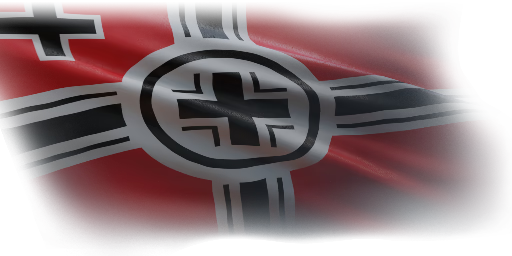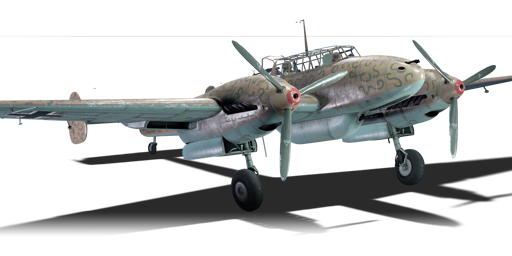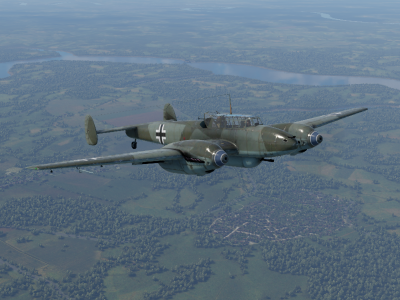


In 1934, Hermann Goring issued a specification requirement for a long-range heavy fighter. Soon after, Messerschmitt submitted their design, the Bf 110, along with two other companies, Henschel and Focke-Wulf. The 110 was Messerschmitt's first twin-engine aircraft and was designed almost right after the Bf 109. As all three companies developed their aircraft, the RLM (German Ministry of Aviation) changed the requirements for more armament. Henschel and Focke-Wulf agreed with the requirements, but Messerschmitt rejected the new requirement and stuck with the original design. The performance loss created by the extra firepower in Henschel's and Focke-Wulf's designs led to the Bf 110 having far superior performance, which was later accepted. This marked the beginning of the Bf 110 in its long history, from the mid-1930s to the end of the war.
The Bf 110 C specifically featured the new DB 601A engines as well as a host of other changes. The air frame was revised, new propellers were added with more capability, and the cockpit enclosure was changed. The wing tips were also clipped, which reduced the wing span. By the time war broke out, squadrons were fitted with the 110 C, and they soon saw battle. The Battle of Britain would be the first major battle for the 110, and it was not good. Due to the nature of being a twin-engine fighter, the 110 could not compete with the more nimble Hurricanes and Spitfires. Many Bf 110s were lost as the war carried on, and it got so bad that they were grounded until more 110s were delivered. The Bf 110 C-6 was a minor improvement over the C-4. The main differences were the addition of a 30 mm cannon and DB 601N engines, which produced more power.
The Bf 110 C-6 was introduced as a premium reward fighter in Operation H.E.A.T event during Update 1.89 "Imperial Navy". It is quite a rare aircraft and features a unique paintjob. The Bf 110 C-6 comes armed with four 7.92 mm machine guns and a single 30 mm cannon; as well as the rear-facing turret. The 20 mm MG/FF cannons found in other Bf 110s were removed in favor of the 30 mm, which was more potent against bombers. The C-6 also lacks suspended armament, so players are relegated to using the 30 mm cannon for armoured targets. With HVAP (high-velocity armour-piercing), the 30 mm can penetrate up to 77 mm of armour which is quite good for a 30 mm. However, it lacks explosive filler, so players need to be accurate and precise when attacking enemy tanks.
flaps
flaps
flaps
brake
| Belt | Belt filling | Armor penetration (mm) at a distance: | |||||
|---|---|---|---|---|---|---|---|
| 10 m | 100 m | 500 m | 1000 m | 1500 m | 2000 m | ||
| HEI-T/SAPHEI-T/AP-I | 58 | 55 | 44 | 33 | 25 | 19 | |
| HVAP-T | 77 | 74 | 61 | 47 | 37 | 29 | |
| HEI-T/HEI-T/HEI-T/SAPHEI-T | 38 | 36 | 28 | 20 | 15 | 11 | |
| AP-I | 58 | 55 | 44 | 33 | 25 | 19 | |
| Belt | Belt filling | Armor penetration (mm) at a distance: | |||||
|---|---|---|---|---|---|---|---|
| 10 m | 100 m | 500 m | 1000 m | 1500 m | 2000 m | ||
| AP-T/AP-I/AI | 9 | 8 | 6 | 3 | 0 | 0 | |
| AP-T/AP/AI/AP-I | 13 | 12 | 7 | 3 | 2 | 0 | |
| AP-T | 9 | 8 | 6 | 3 | 0 | 0 | |
| AI/AP/AP/AP/AI | 13 | 12 | 7 | 3 | 2 | 0 | |
| Belt | Belt filling | Armor penetration (mm) at a distance: | |||||
|---|---|---|---|---|---|---|---|
| 10 m | 100 m | 500 m | 1000 m | 1500 m | 2000 m | ||
| AP-T/Ball/Ball/AP-I/AI | 9 | 8 | 6 | 3 | 0 | 0 | |
| AP/AP/AP/AP-T | 13 | 12 | 7 | 3 | 2 | 0 | |
| AP-I/AP-T/AP-I/AP-T | 9 | 8 | 6 | 3 | 0 | 0 | |







 2 x (50 / 85 / 210) %
2 x (50 / 85 / 210) % 
 2 x 124 %
2 x 124 % 

Flight performance | |
|---|---|
Survivability |
|---|
Weaponry | |
|---|---|
